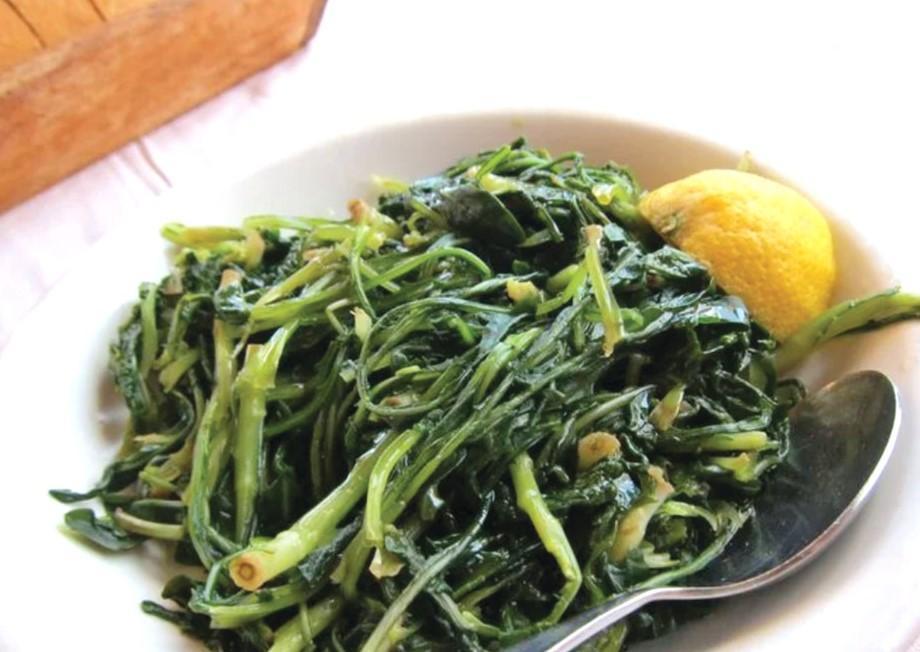Bounty of May, wild greens and Crete

Undoubtedly, May is the most beautiful month of the spring season. May is also the month of beautiful spring holidays and festivities celebrating the joy of nature, starting with May 1 and the time of Hıdrellez on May 5 and 6, which is the ultimate spring festival in the country, especially in the coastal regions of the country, mainly the Aegean and Thrace. In Türkiye, it is also the national holiday of May 19, which commemorates the beginning of the Turkish War of Independence in 1919 in the official historiography. Interestingly, Atatürk dedicated the day to the youth, declaring it as the Youth and Sports Day not for nothing. His choice apparently had a message. May stands for youth, growth, vitality and new beginnings. When it comes to tables May means lots of greens and fresh flavors to celebrate the bounty of spring.
May is for blooming, and to my luck, the month came to me with good news and new beginnings, and indeed with lots of greens to eat. Out of the blue, I was invited to a symposium in Crete, the first International Gastronomy and Culture Symposium that took place in Heraklion between May 3 and 5. Crete had been a place I long wanted to visit, but could never put my wishes into action. A few days before my departure, when I was looking for something else in my library, I spotted a guide dated 25 years ago, proving that the island has been on my bucket list for a very long time. The symposium was organized in partnership with the Municipality of Heraklion, Crete, Yale School of Public Health and Yale Hospitality. As the profile of the organizers suggests the symposium was dedicated to hospitality which is like a national sport in Crete, and also the healthy way of living and the sustainable diet of Cretans, which can be interpreted as the core of the famed Mediterranean diet.
The title of the symposium was exciting: “A Celebration and Renewal of Crete’s Food, Culture, and Heritage”. The panel I was going to participate focused on the role of women in Mediterranean nutrition. Our panel was to be moderated by Sevasti Chatzopoulou, a distinguished expert on food policy based in Denmark, and two colleagues Mariana Kavroulaki, experimental archaeologist/food historian and Anastasia Tzigounaki, archeologist. We were to discuss the place of women in this ancient culinary culture, women’s lives in the Mediterranean societies, their role in storytelling, passing down family recipes and teaching culinary practices to next generations. The first thing that came to mind was of course the practice of wild greens and the culture of foraging. When we think of Cretan cuisine, we immediately think of herbs and foraged greens. The knowledge of herb gathering is passed down from mothers to daughters in Crete, in all Greek mainland and the Greek Islands, in Anatolia and all countries in the Mediterranean basin. It would be an interesting experience to discover the commonalities and similarities in herb culture shared across the Mediterranean.
In Türkiye, we have many people of Cretan origin. Cretan identity is always remembered proudly, especially when it comes to food, and Cretan food is believed to be all about wild edible greens. Being “Giritli,” which is Cretan in Turkish, is almost synonymous with being a great eater and expert of anything foraged from the wild. Foraging is an ancient knowledge, an intangible cultural heritage sustained throughout the ages, since perhaps the hunters & gatherers, now enjoying a revisit by young chefs under the influence of the waves of Nordic culinary trends blowing from Scandinavian countries. Turkish people have a lot of sayings about Cretans, all related to their fondness for wild greens. One famous saying is: “Do not let the cattle and Cretans in your field!”, a clear warning that nothing will be left. Another one says: “The donkey took the load from the Konya people, and the weed from the Cretan”. One cannot really tell whether this is a compliment, but the people of Konya, a Central Anatolian town, do not necessarily take pride in this saying, but surely Cretans can, they must be proud of their great culture of foraging wild greens.
The wild greens of Crete, called "Horta" in general, are quite the same as the greens we have in the Aegean region. One of the most common is what we call “pirpirim,” or wild purslane. In Greece, it is called “chiróvotano” or “glistrida,” a fresh delight in salads. Another common herb is what we call “ebegümeci”, mallow in English, they call it “molókha” or “abelókha.” This name reminded me of the plant called “molehiya” or “mülhiye” in Turkish, which is very popular in Cyprus and also known in Antalya. Cypriots regard it as almost a national dish, usually cooked with chicken, or sometimes with lamb, with copious amounts of lemon juice. I realized that the Greek name for mallow is similar to “molehiya,” in fact, there is some flavor kinship too. In the list of the most eaten greens, there is also a plant called “stamnagáthi” or “radikostiváda,” known as prickly chicory. A slightly stronger flavor that adds a nice bitter bite to salads is the dandelion, “pikrafáka” in Greek, “karahindiba” in Turkish, whose yellow flowers then turn into feathery pompoms and fly around in May. The herbs are varied, but Cretan cuisine is not all about "horta" of course. The use of whole grains and legumes, goat milk cheeses and yogurt, sparing but delicious use of kid and lamb meat, all the seafood and fishes and snails, delightful honey, and premium cold pressed olive oil make up a cuisine which might be one of the healthiest around the globe. This is why the core of talks in the symposium was around whether Cretan cuisine could be called the basis of Mediterranean cuisine. Listening to eminent scholars many ideas began springing into my mind, such as creating a special foraging app for Cretan greens and herbs, or creating joint projects between communities across the sea, and upon my return, I already accepted participating in a cookbook by a Cretan immigrant in Istanbul. The month of May came with its bounty, going to Crete was a new start for me, a long-awaited wish coming true, opening a new window in my studies, a new book project, and many more articles to be written here!












